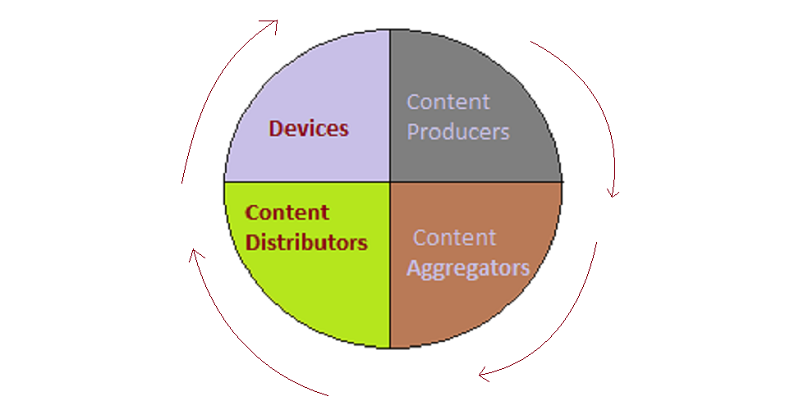How to resolve 3 major challenges of multi-channel content distribution?

‘Anytime, anywhere’ is the power given to viewers by the rise of technological sophistications in digital video management. As the options of watching videos are plenty with many number of platforms mushrooming every day, the content owners behind the screen find it more complex to meet the requirements for distributing videos in all those channels. There are a lot of challenges involved in making a video compatible to the required specifications that differ with different platforms.
For an optimist, the scenario gives a lot of opportunities to market the content as there are more number of platforms that can reach more audience, when the targeting is done meticulously. With the advent of social media, both the opportunities and challenges of video distribution in multiple platforms have gone up.
The media and entertainment industry is expected to be at $160 billion in 2017 at a compound growth rate of 9%. There have been nearly more than 300 devices that the content should be compatible with. Netflix is testing its content for 350 devices, says one of the senior executives from a leading network. These two digits can tell us the story of opportunities and challenges involved in the multi-platform distribution of video content.
Thus, it is very much necessary to understand the challenges in order to leverage the plethora of opportunities available in the distribution and monetization of content across multi platforms.
An overlapping content value chain:
The content value chain has gone through a lot of transformations, which was linear to begin with in the absence of multi screens and social media. Nowadays, the content value chain depicted in the figure below has overlapping functionalities with each of the entity having a direct relationship with the end-user.

For instance, most of the Hollywood studios as content producers sell their content on Ultraviolet through which the viewers can store them on cloud and access them whenever and where ever required in any device. Content aggregators, like for example Netflix has their own content produced as that reaches the audience in more than many channels and devices. Thus, content distribution is possible anywhere in the chain making it a more complex yet flexible structure with no defined boundaries, as it had once.
A complex business work flow:
The content distribution process has a number of steps in sequence that needs to be followed to deliver the content to the right destination in the right format. It starts with the content capture and then followed by ingestion, transcoding, storage, Quality Audit or review and finally delivery to the relevant device. There are some more complex processes involved to make the content easily findable like metadata management, thumbnails creation and so on.

These processes are very much specific to each device that are served and hence the realistic distribution of content is way too complex than what appears in our logic that it is just making the right format of content for the right device. Our idea of multi-channel content distribution is just the tip of an iceberg, until we know how mammoth the task is, once performed.
Repurposing the content:
There is not just one kind of audience; neither are devices. There are a lot of analytics available nowadays to find the right consumer and their preferred viewing habits. Some may prefer to watch events live. Some would prefer only its highlights. Some prefer tragedy and some the comical perspective of a feature film.
Thus one piece of content needs to be repurposed in many ways to make them larger number of pieces of accessible content, based on the intelligence acquired through analytics and reports. Each piece of content would have device specific requirements including screen resolution, bandwidth restriction, packaging requirements, ad spots, file formats, metadata formats and fields, etc. to name only a few.
There needs to be several independent teams working on these requirements for every individual channel or device, making it a highly time and resource consuming job.
But, it’s easy to win
The challenges may sound daunting yet they are not invincible. Investing your time and resources in the most effective distribution workflows and automating them, can help you address the challenges effectively and boost up your ROI. By resolving these challenges with some intelligent efforts, you would be able to tap the ocean of opportunities.
The process of multi-channel content distribution might have become more complex, but for this reason it cannot be considered a no man’s land. There are highly sophisticated technologies available with experts to help you resolve the challenges and succeed in content distribution.
It is not a tough nut to crack, but it’s all about the way you crack it.



